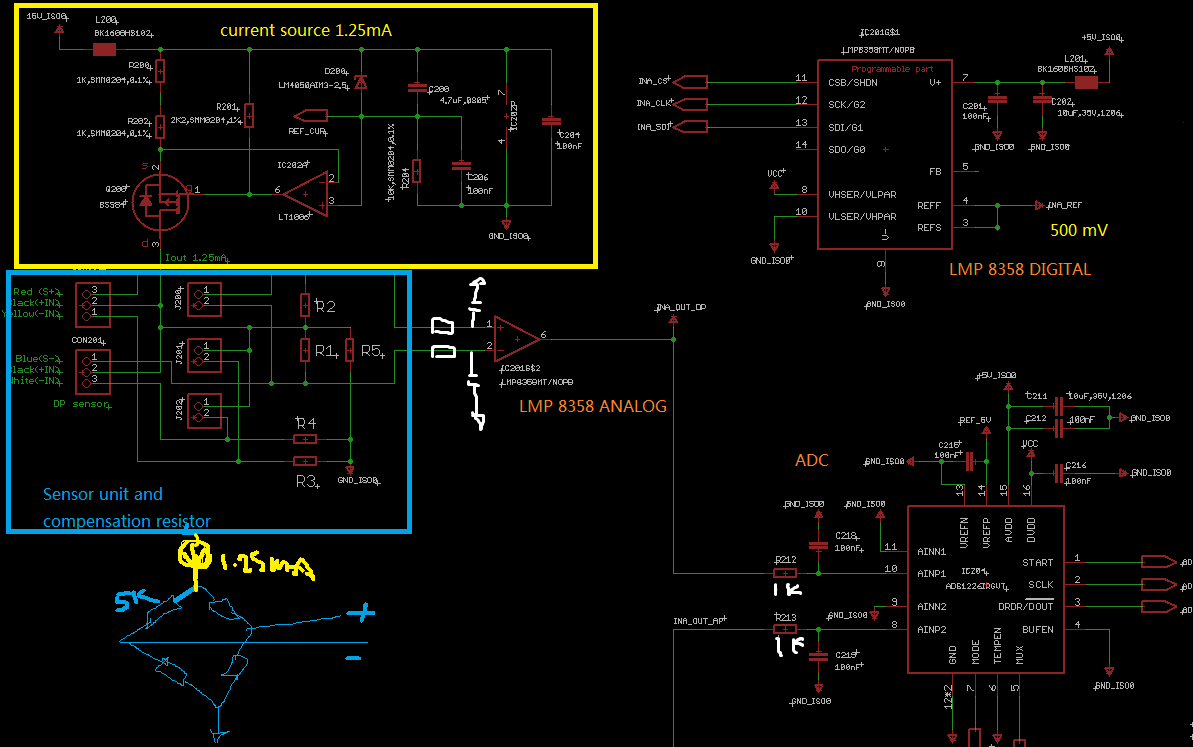Hi all!
We are using LMP8358 as amplifier for pressure sensor , meanwhile, 50Hz oscillation or interference is observed at the output of amplifier. Short introduction of the application and test procedure and results are as following.
-
Application
1.25mA constant current through resistance bridge (pressure sensor, each bridge ~ 5kohm), differential outputs connect to the input of LMP8358, the output of amplifier connects to the ADC with a RC filter in between.
circuit
-
Problem
at the output, 50Hz oscillation (amplitude: +-60mV or even larger) coupled, when the gain set at 1000. When the gain at 500, the amplitude is smaller, and the gain at 100, the amplitudes is smaller than the gain at 500. Probe at the INPUT, can not observe the 50Hz.
-gain: 1000x
-gain: 500x
-gain:100x
- What have been done
- put 10 nF cap at both input of amplifier – no help
- put RC (10k + 10nF) at the input – no help
- put RC (1k + 1uF) at the output of amplifier – no help
- put RC (6.8k + 1uF) at the output of amplifier – no help
- use resistor bridge instead of real sensor – no help, exclude the sensor problem
- use the other PCBA – no help
- put the sensor to the older version circuit, which uses OPA2735 with gain 15, no 50Hz can be observed.
Thanks for all the suggestion! for any questions, pls write below, thx!
Jason


